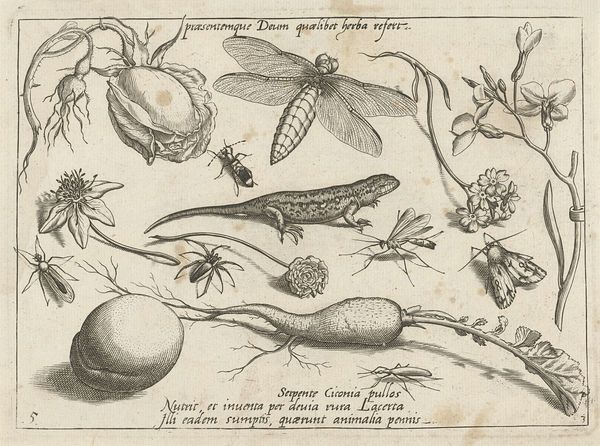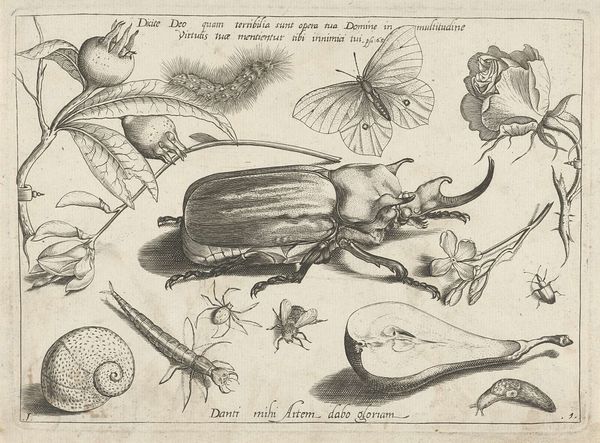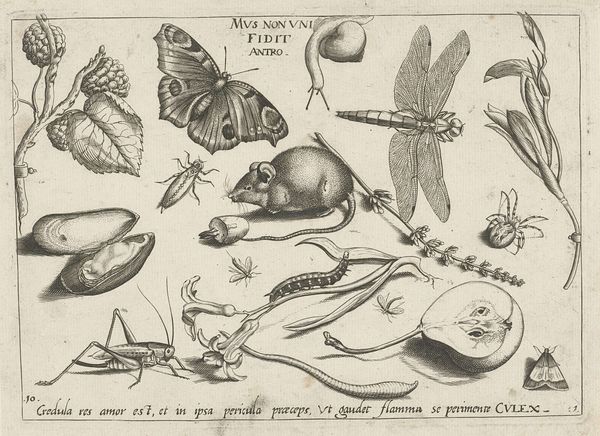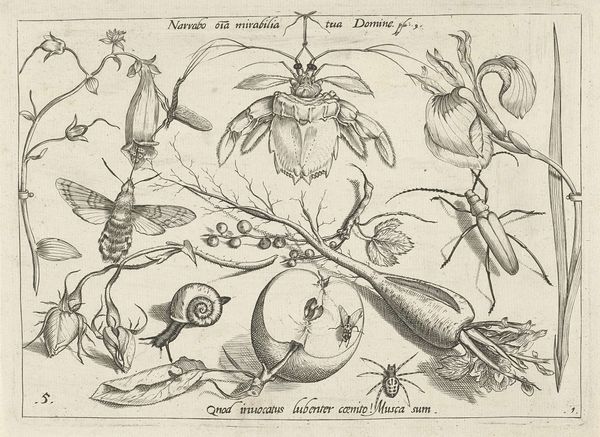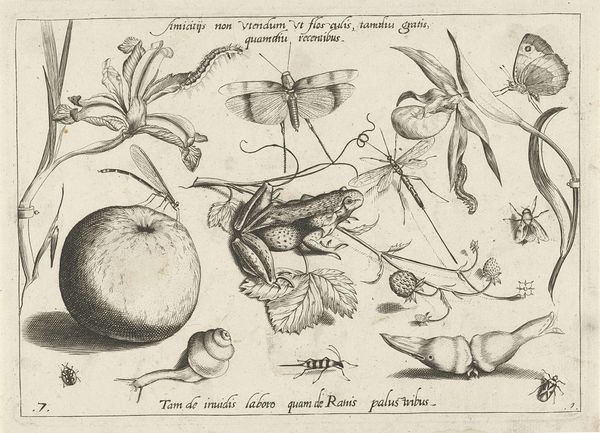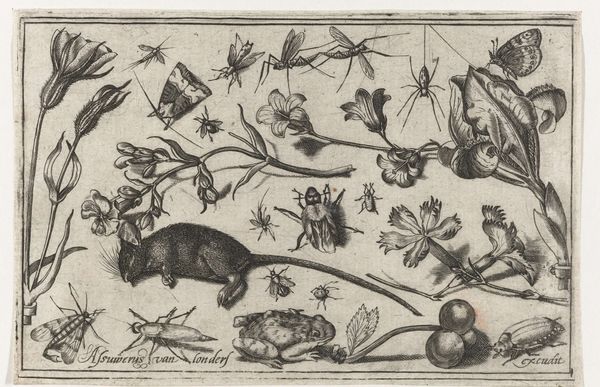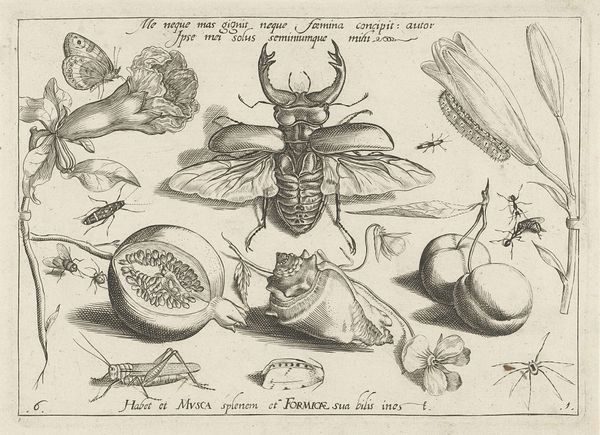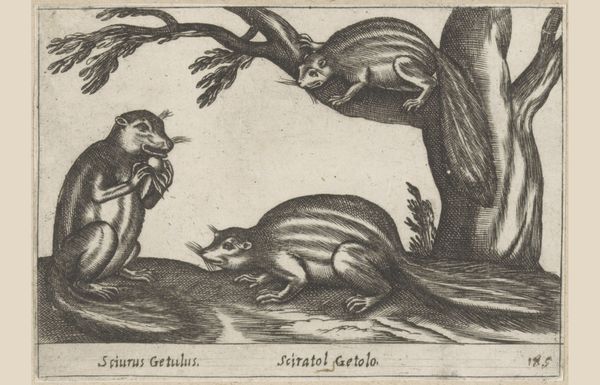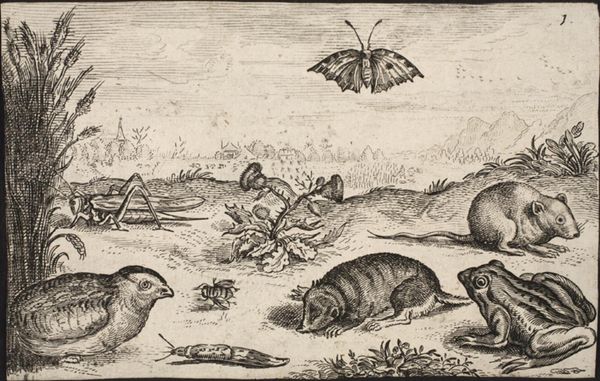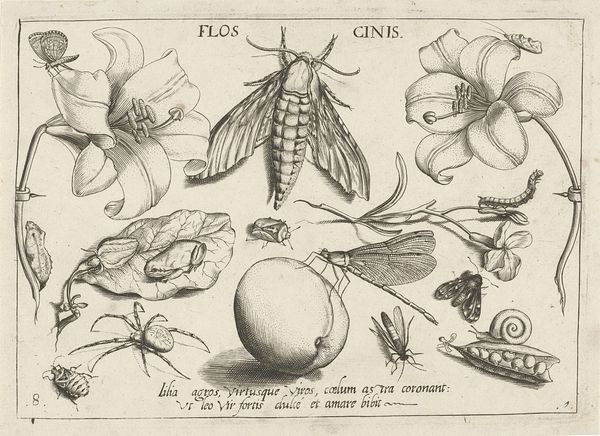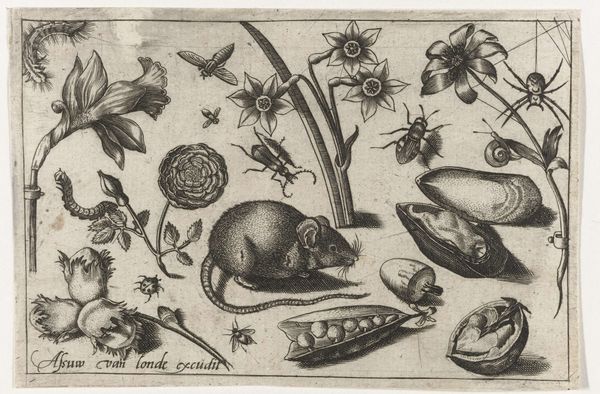
#
comic strip sketch
#
pen illustration
#
pen sketch
#
flower
#
personal sketchbook
#
sketchwork
#
pen-ink sketch
#
pen work
#
sketchbook drawing
#
storyboard and sketchbook work
#
sketchbook art
Dimensions: height 155 mm, width 211 mm
Copyright: Rijks Museum: Open Domain
Editor: This pen and ink drawing, titled "Insecten, planten en vruchten rond een rat," made sometime between 1592 and 1726 by Jacob Hoefnagel, is brimming with detail! I’m initially struck by how busy the composition is, all these different natural elements crammed into one frame. What do you make of its historical context and the purpose it might have served? Curator: It's fascinating, isn't it? Placed within the late 16th to early 18th centuries, consider the rise of scientific inquiry and natural history. Works like this were often part of meticulously documented collections, precursors to modern-day scientific illustration and, crucially, knowledge dissemination to elite society. These meticulously detailed depictions served not only aesthetic purposes, decorating studies and cabinets of curiosities, but also signified the patron's erudition. Does the inclusion of a rat change how you perceive this drawing’s message, rather than say a bird or butterfly? Editor: That’s a good question! I guess the rat shifts the tone… it introduces an element of… mortality or decay perhaps? If it were just the flowers and insects, it would be purely celebratory of nature’s beauty, but with the rat it’s more complex. Does that darker symbolism make sense in the context of that era? Curator: Absolutely. Think about the plague, famine, and general anxieties of the time. While the natural world was a source of wonder, it also harbored threats. The rat becomes a reminder of our own vulnerability and the cyclical nature of life and death. The inscription then might relate to this duality; we should remember that art from this period wasn't solely about decorative or scientific aims, but to communicate political values that shaped society’s understanding of itself. It's about more than just recording—it's a moral and political commentary. Editor: Wow, I didn’t consider all those layers. Thanks for pointing them out. Curator: Of course. Recognizing these multiple contexts reveals how imagery functioned in shaping power and communicating meaning during the early modern period. Editor: That connection to broader cultural and political themes has certainly changed my understanding and appreciation.
Comments
No comments
Be the first to comment and join the conversation on the ultimate creative platform.
